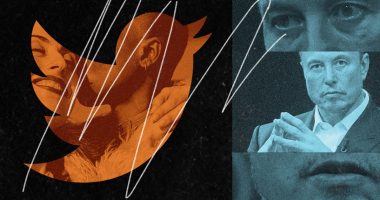People are starting to make bigger decisions to blunt the impact of rising prices.
The consumer-price index, which tracks what people pay for goods and services, hit 7% in December, marking its fastest pace since 1982. Initially, Americans met this increase by making simple changes at the grocery store or by cutting out some other, more common purchases.
But those small cuts are proving not to be enough lately, say economists, financial planners and consumers. Now, many are making much larger changes, such as scaling back their weddings or learning a new skill to save money.
Chris Diodato recently bought his first home in Palm Beach Gardens, Fla.—a fixer upper that he still paid “top dollar” for, he said. He had planned to hire a contractor, but given the fast rise in prices for building materials and workers, he has been doing much of the work himself.
Last week, he replaced his popcorn ceilings and saved nearly $3,000 compared with what he was quoted by a professional, said Mr. Diodato, 30.
“Online tutorials and YouTube have been a blessing,” he said.
The need to make lifestyle changes is in many ways a reflection of just how broad the gains in prices are. There are higher home heating prices, surging rent costs and rising food and gas prices.
Trading down in food or forgoing favorites that have risen in price is often one of the first places people look to save in inflationary times. When prices increased during the recession of 2008, consumers substituted higher-priced goods for cheaper options. Consumers sought sales, purchased larger sizes, used more coupons and opted for generic brands, said Aviv Nevo, now a professor at the University of Pennsylvania, and Arlene Wong, a Princeton University professor, in a 2019 research paper.
This time, however, inflation seems to be increasing quicker.
“Inflation has broadened out—it’s not just lumber and used cars anymore,” said Ted Rossman, senior industry analyst at Bankrate.
Jonathan Bird and his fiancée hoped to host a 30-person wedding in Sedona, Ariz.
Two years ago, they were quoted roughly $20,000 from their preferred hotel. After getting engaged this past December they inquired about prices for an October wedding. The hotel price jumped to almost $54,000.
The couple is instead having their wedding this year at a vacation rental in Sedona, and the entire event will cost about $15,000.
“2022 is the year of catch-up weddings, and it’s caused prices to soar,” Mr. Bird said.
Mark Struthers’s favorite lunchtime spot is LifeCafe in Chanhassen, Minn. Earlier last year, the restaurant raised the price of his go-to hamburger by about $1 to $9.99, so he switched to their “California Chicken” sandwich, which was still $9.99, he said.

Mark Struthers started ordering avocado toast, which costs $5.99, and supplementing with a protein bar and banana after sandwich prices rose.
Photo: MARK STRUTHERS
But around December, the sandwich prices again suddenly changed, said the financial planner in Minneapolis.
“Bam! They both moved to $12.99!” he said.
Swati Ghatti, manager of the cafe, said it was necessary to raise prices to maintain a profit. She said the restaurant is being hit with higher costs for main ingredients such as chicken, rising gas prices and staff.
Mr. Struthers has since switched to the avocado toast, which costs $5.99. He now brings a protein bar and banana to supplement.
Kermit Mulkins’s personal inflation hedge: quitting his soda habit. The 43-year old art director in Tulsa, Okla., said he used to spend about $700 a year on soft drinks and bottled ice teas. Now, he estimates he’ll spend about $35 by making carafes of unsweetened tea this year.

Kermit Mulkins quit his soda habit and is saving money—and losing weight—by making carafes of unsweetened tea.
Photo: KERMIT MULKINS

Kermit Mulkins is also doing large-batch cooking and making choices based on prices as well.
Photo: KERMIT MULKINS
The change is helping him save money, lose weight and feel less anxious, he said.
Mr. Mulkins is planning to buy dried beans instead of canned ones for the large-batch cooking that he freezes. He’ll buy meat only if it is on sale. Refrigerator staples—including meats, poultry, fish and eggs—rose in price 12.5% over the past year, according to the Labor Department.
“I knew I made the right decision to cut back when I recently saw that some of my favorite brands cost around $1 more,” he said.
While Mr. Mulkins can make a swap, this type of decision isn’t always possible. For items such as medications or tobacco, consumers tend to absorb any price increases and reduce their spending elsewhere, said Sarah Newcomb, director of behavioral science at Morningstar. For these items, some consumers are finding creative ways to make their purchases go further.
Melissa Rohlfs said she gasped when getting three-fourths tank of gas for her sedan cost her more than $70. It usually costs $49 to $52 to fill up her car from empty, she said.
SHARE YOUR THOUGHTS
What trade-offs have you made due to rising inflation? Join the conversation below.
The 50-year-old San Mateo, Calif., fundraiser decided to start driving less and now carefully plans her trips. For example, she’ll double book family doctor’s appointments and batch errands. Ms. Rohlfs’s medical expenses make her especially conscious of rising prices, given that she lives in one of the priciest real-estate markets in the country, she said.
“Everything is expensive here,” she said.
Write to Veronica Dagher at [email protected]
Copyright ©2022 Dow Jones & Company, Inc. All Rights Reserved. 87990cbe856818d5eddac44c7b1cdeb8









